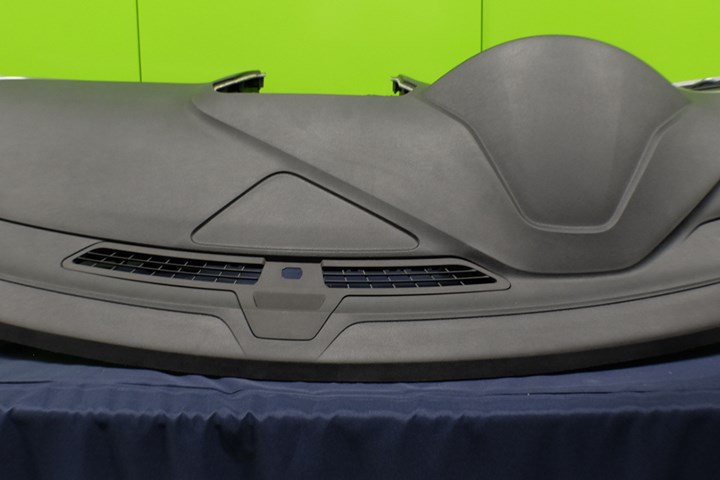Super High-Flow TPEs for Sustainable Large-Scale Moldings
Hexpol TPE’s new Dryflex HiF TPS-SEBS family boast very high melt flow and scratch resistance.
A new family of very high melt-flow and scratch-resistant TPS-SEBS materials recently launched by polymer compounding group Hexpol TPE (U.S. office in Sandusky, Ohio), reportedly open possibilities to produce large-scale parts via injection molding including automotive interior surfaces, trims and skins.
Speaking on the development of The Dryflex HiF grades, group product manager Dr. Thomas Köppl notes, “There are several processing methods and materials on the market that allow production of automotive interior surfaces such as instrument panels and door trims. However, these processes can be costly, and the materials are not recyclable. OEMs are looking to improve their sustainability practices while also managing system costs. This is why we developed Dryflex HiF TPE.”

Dr. Köppl says the company worked in close collaboration with Kraton Corp. to produce Dryflex HiF TPEs, based on Kraton IMSS technology, which deliver a combination of high-performance, soft-touch appeal, processing optimization and recyclability. “They are part of our growing portfolio of materials bringing new possibilities to the automotive industry”.
Dryflex HiF TPEs can be used in multi-component applications with direct overmolding to polypropylene. Compared to existing TPU or PU-RIM processes, which often use PC/ABS as the rigid component, the material’s ability to adhere to PP can deliver further cost and weight reduction in 2K processes.
TPE materials are already widely used in automotive interiors, for example in mats, grips and sealings. However, until recently, TPEs have not been viable for large scale trim because these applications have much higher specifications regarding abrasion behavior, processability and heat resistance. The Dryflex HiF TPE grades are said to fulfil these requirements and are injection moldable, making them an interesting alternative to PU coating, PVC slush molding or TPO foil processes.
In a production trial, 1.1 mm thin skins for the soft surface of a complete instrument panel were molded and back-foamed with PU, demonstrating that even very large, thin parts can be produced via injection molding due to the high flowability of the Dryflex HiF TPE. Testing demonstrates that Dryflex HiF TPEs pass the stringent lightfastness and heat resistance requirements for instrument panels (for example 120 C/248 F) for 1000 hours). A low-gloss, matt surface with no visible weld lines is achievable as well as the molding of different leather grains. Surface performance is confirmed by the testing of Erichsen scratch resistance and Crock abrasion.
Related Content
-
Lanxess and DSM Engineering Materials Venture Launched as ‘Envalior’
This new global engineering materials contender combines Lanxess’ high-performance materials business with DSM’s engineering materials business.
-
Prices of All Five Commodity Plastics On the Way Up
Despite earlier anticipated rollover in prices for most of the volume commodity resins, prices were generally on the way up for all going into the third month of first quarter.
-
Prices Up for PE, PP, PS, Flat for PVC, PET
Trajectory is generally flat-to-down for all commodity resins.







